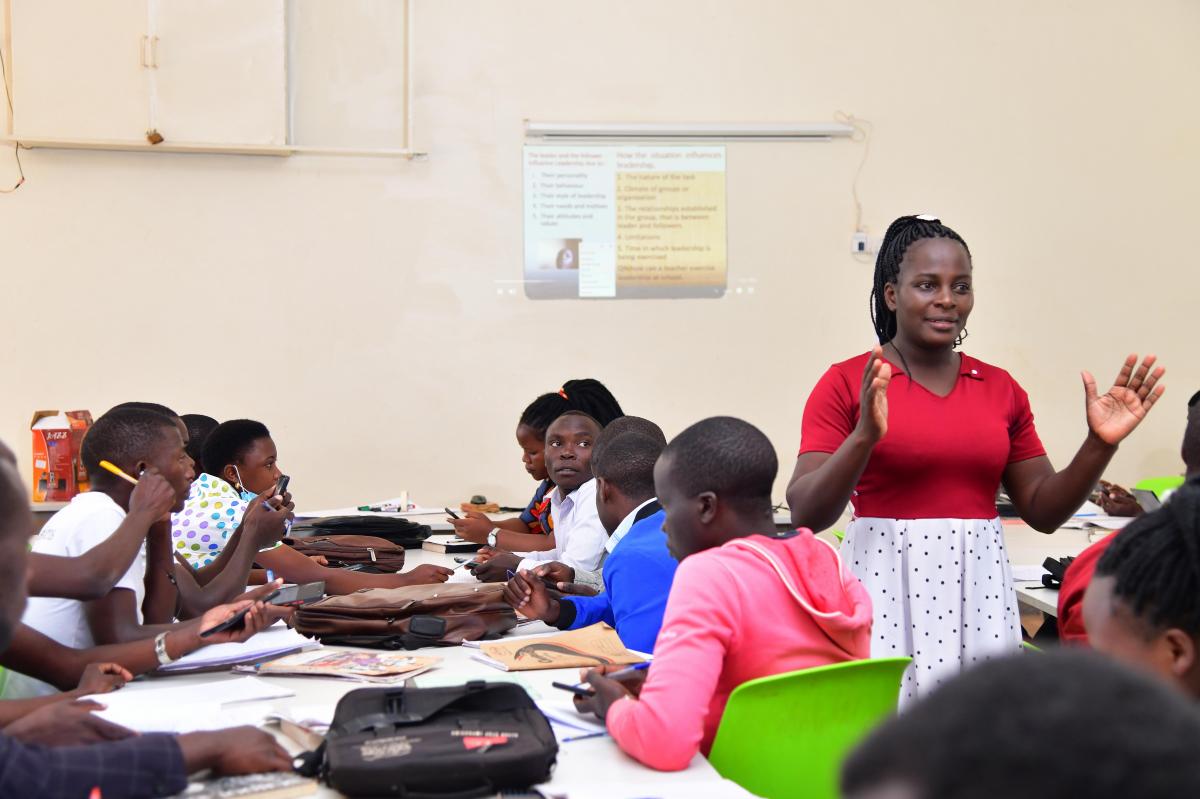'Technophobia' in Ugandan Education Sector Overcome Thanks to Corona Lockdown
During
the corona pandemic, schools in Uganda were closed for almost two years. A
small - Belgian - innovation to be able to continue to communicate eventually
led to a digital revolution in Ugandan teacher training.
Before the outbreak of Covid-19, an education official
in the district bordering Uganda's capital Kampala banned teachers from
bringing computers, mobile phones and tablets into classrooms.
The official, Frederick Kiyingi,
at the time believed that telephones and ICT devices were distracting students
and jeopardizing their concentration.
The
whole world around me
Teacher
William Musaazi sees
it differently. 'With this smartphone, I can get around the world at the
touch of a button. And that saves me a lot of effort. At the same
time, it makes my lessons interesting. It's like a captivating movie, but
with multimedia," said Musaazi.
'The days of teaching from the abstract
are over. We need to bring the real world to the students, preferably at
no extra cost," he adds.
The Ugandan Ministry of Education has
made efforts to equip schools with desktop computers, but Musaazi realizes that
there is no national strategy for getting ICT infrastructure into
schools. He says he keeps the devices out of the classroom for fear of
going against existing guidelines. In addition, he notices that many of
his colleagues often only used mobile phones and tablets for calling and
texting.
Distance Learning Strategy
In March 2020, at the height of the
Covid-19 pandemic, Ugandan President Yoweri Museveni announced a measure that
brought learning to a halt. Schools and universities were closed for
almost two years, with 15 million students without education. The Ugandan
Ministry of Education proposed to give lessons via radio and television, but
that has not worked.
The Belgian development agency Enabel,
together with the ministry, developed a strategy for distance
learning. The result was ' TTE Sandbox ', a
digital portal that enabled at least teacher training to continue.
Workshops taught at the five National
Teachers' Colleges (NTCs), where teachers are trained, the use of
technology in the classroom – rather than just the traditional
methods. The students learned how to use digital tools – such as screencasting,
podcasting, video conferencing, e-books or padlets – to teach.
The strategy was also rolled out to
prevent the Ugandan education sector from becoming extinct and disadvantaged
after the prolonged period of closure.
Technophobia
Technophobia
Ironically, Enabel had already proposed
the use of technology to the NTCs in 2019, but experienced teachers were reluctant,
recalls Virginie Hallet, manager at Enabel in Uganda.
“They said they were born before the age
of computers, and they didn't know anything about it. So why would they
use it in class?', said Hallet.
Andrew
Tabura, a government official responsible for secondary
teacher education, explains that although the colleges were equipped with ICT
tools, the teachers had a "technophobia." But the necessary
training has thawed everything out. 'When the covid closure was a fact,
they realized that these tools could still be used to reach the students,' says
Tabura.
Defibrillator
for Education
Hallet explains that TTE Sandbox was
initially a set of communication technologies to facilitate distance learning
at the NTCs.
However, it gradually became an
effective tool, to the extent that it helped to speed up the resumption of
educational activities.
According to Virginie Hallet, 62 per
cent of students who were at home in different parts of Uganda were able to
attend classes. 'It meant that the training could continue. I think
we had similar student participation in Belgium in June 2020', says
Hallet. The Sandbox, she said, made the minds mature for using technology
in the classroom.
At the NTC in Kabale, 400 kilometers
south of Kampala, teachers are still using the TTE Sandbox and other online
tools to teach aspiring teachers almost a year after the colleges reopened.
One cold morning, professor Molly
Nakimera is teaching her. The auditorium is equipped with an
overhead projector and a set of speakers. A number of cables connecting to
a laptop computer are visible. Nakimera projects a role-playing video
about education management. Then the class is invited to comment and
contribute to the created scenarios.
Nakimera says it would normally take
more than three weeks to complete this course. But with the help of videos
and podcasts, she achieves a better result and is less time-consuming.
'I teach a very large class. I used
to have to yell a lot as a teacher. I regularly couldn't even finish the
syllabus," she says.
She says that her ICT knowledge used to
be limited to typing Word documents. She knew nothing about podcasting and
making educational videos. For her, the smartphone was meant for making
calls and checking emails. Now she realizes that it is a small computer in
her bag, and also a teaching and learning tool.
'These are new things that make me feel
more stimulated, that make my work easier. I feel it makes me more
professional," said Nakimera.
Zoom
and Google Classroom
Mujungu
Herbert, a physics and math teacher at NTC Kabale, says that
before the pandemic, teachers mostly used chalk, their voice, and occasionally
lab or environmental materials in their classes.
'With the ICT equipment I notice that
the students are more active during the lessons. Education is more
student-oriented than teacher-oriented', explains Mujungu.
When asked why he hadn't embraced the
technology earlier, he replied that he and his colleagues saw no reason
to. The existing pedagogy did not say a word about it either.
'I only came to a computer when I was
preparing for an exam. Before the pandemic, I had never heard of
Zoom. But while we were in lockdown, we realized that we could only access
our students with the help of ICT tools," says Mujungu.
“We've started using Zoom for virtual
meetings, there are some applications that I've started using to record my own
screen. Then I got to know tools like Google Classroom to teach an online
class,” he adds.
Google Classroom allowed students to
virtually participate in lessons, create tests and tasks, and follow them in an
interactive way. He does add that students who do not have access to the internet
miss classes. Even those who do not have a smartphone or tablet have more
difficulty accessing online resources.
This article was originally written by
Michael Wambi from Inter Press Service (IPS), a news agency providing news from
the Global South present in more than 400 locations.
Latest news from this project
No news

